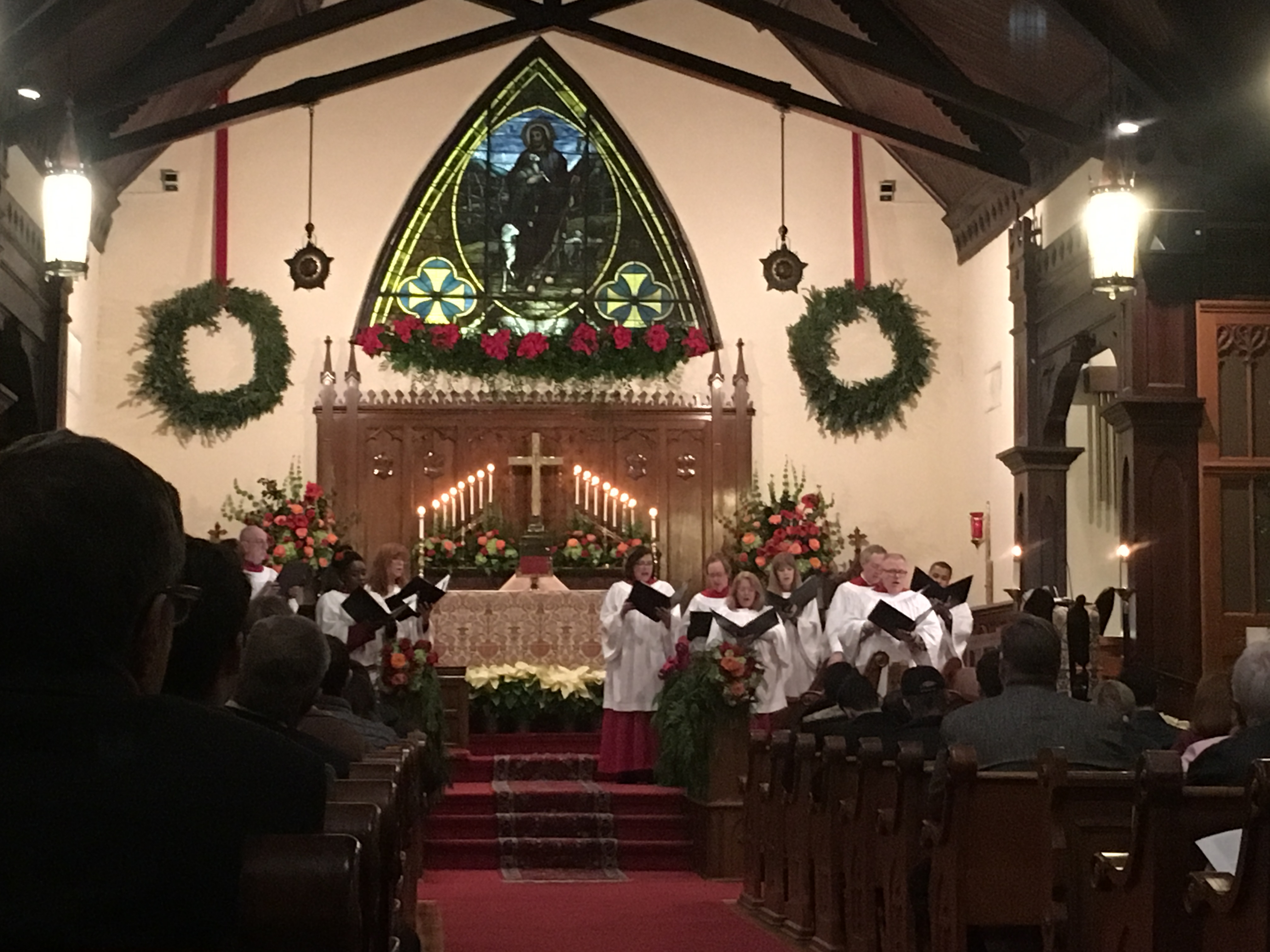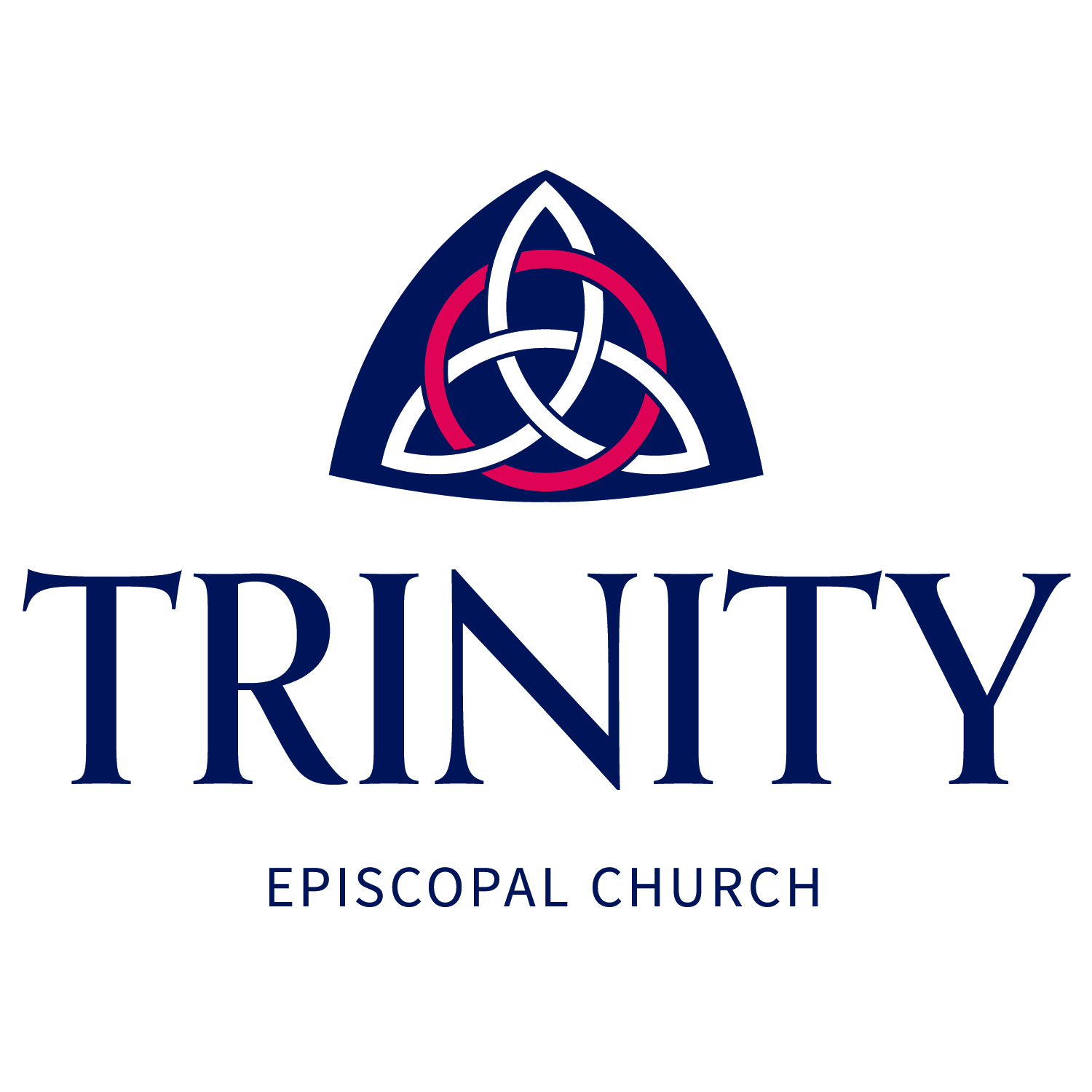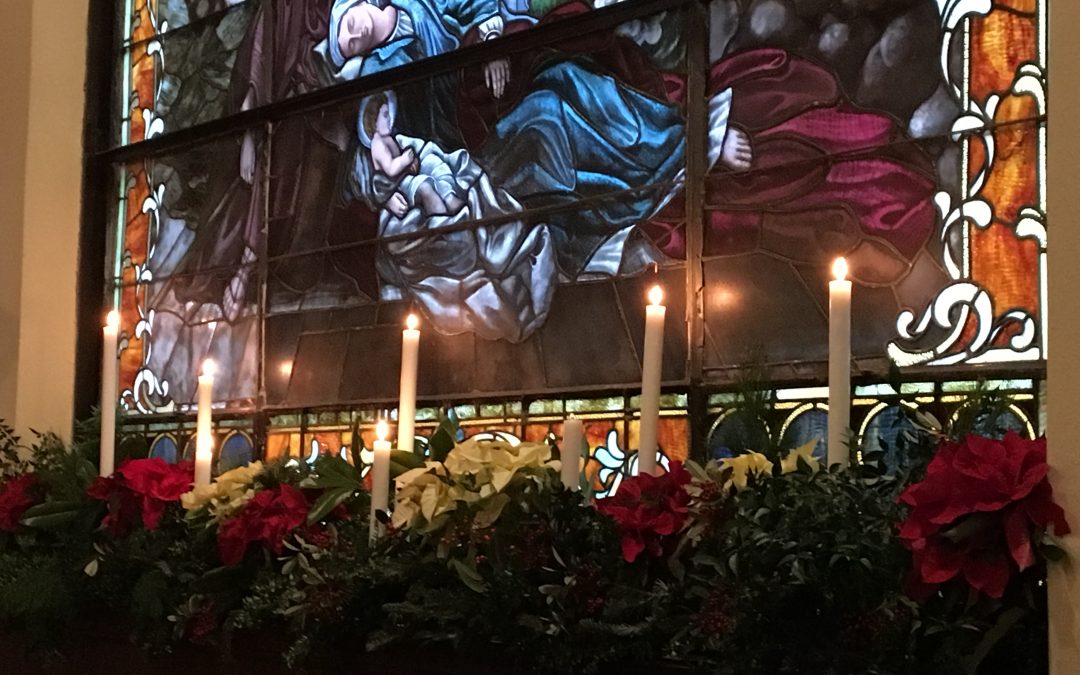Christmas Eve at Trinity…
One of the highlights of my Christmas is worship on Christmas Eve. I love the pews packed with wriggling, bright-eyed children at the 5 p.m. service. I love the hushed, candlelit crowd gathered for the late service. I love singing every single verse of my favorite Christmas carols. I love the candles. I love hearing the story of the birth of Jesus and the wonder of the shepherds when they found him and his family in Bethlehem. In that hushed, holy service, it seems to me that we’re listening to that story with all the generations of Christians that have gone before us gathered all around us. I even love that we pull out the incense on Christmas Eve. “Holy smoke” was one of the ancient signs that God was present in the stories of the Bible (Exodus 19:18 and Mark 9:7 are two examples of this). Our incense signifies to us the presence of God. It may smell strange and get caught in our throats, but there’s something otherworldly and wonderful about it, too.
Our beautiful and meaningful Christmas Eve services bring in a number of people who don’t regularly attend an Episcopal Church. If you know someone who’s thinking about worshipping with us at 5 or 11 p.m. this Christmas Eve and think that person might have some questions about how we worship or what to expect, here are a few pieces of information you might pass on to them, along with a heads up about incense, of course.
- Lots of churches feature a podium or a pulpit as the focal point of the worship space. In the Episcopal Church, you’ll see a large table — an altar — is the most significant feature inside the worship space. The pulpit is pretty prominent, too, but that altar is what most people notice first. While some altars are made of stone, ours at Trinity is made of wood. The priest stands behind the altar, facing the congregation, to celebrate communion. The altar is the focal point of the church because communion is so important to us.
- Communion (the Eucharist): this is another really important thing to know about Episcopal worship. We love to take communion together. We believe it brings us closer to God and each other every time we take it. We believe that the bread and wine (yes, it’s really wine and not grape juice) can nourish and sustain and transform us. Are they the literal body and blood of Jesus? We don’t believe so, but we do believe that Jesus Christ is really present in the bread and the wine and that the bread and the wine are able to feed us in a way that regular old bread and wine can’t. While there’s a difference of opinion among Episcopalians about whether non-Christians should take communion or not, we do agree that all Christians, regardless of denominational affiliation, should take communion together.
- When you sit in a pew in an Episcopal Church, you’ ll find at least two different books in the racks attached to the pew in front of you: a Hymnal and The Book of Common Prayer (BCP). There may be a Bible there as well, but there will certainly be a Hymnal and a BCP. Does this mean that the BCP is more important to us than the Bible? Well, if you take a look inside a BCP you’ll see that the BCP contains all of the psalms, is packed with citations of and references to the Bible. The BCP is our book of worship, and we worship using the language and the models given to us in the Bible. The BCP contains our service for celebrating communion together. It contains services for marriage, burial, ordination. There are special services for Ash Wednesday, Good Friday, and Easter. We know that the BCP is new to most folks who worship with us for the first time, so Trinity members are always willing to help out a newcomer, and we do have a worship bulletin that has most of the service printed in it as well as the corresponding pages in the BCP that we hope will help as well.
Another thing you’ll notice in our pews is that attached to the underside of the pew in front of you is a kneeler. In the Episcopal Church we stand or kneel to pray, kneel to confess our sins, and stand to sing. Sometimes we call all that standing, sitting, and kneeling ““pew aerobics.” It’s not required, and it’s highly unlikely anyone would even look at you twice if you didn’t kneel. The point is that if you reach out under the pew in front of you and pull that kneeler — carefully — toward you, you will find a relatively comfortable place to kneel if you so choose.

Whether you are able to worship with us or not, we at Trinity hope that you have a holy and meaningful Christmas. We pray that you may feel that God is truly present in this world and that knowing the nearness of God will bring you healing, strength, and Christmas joy.

